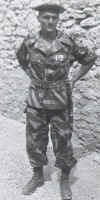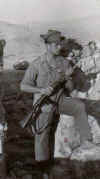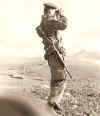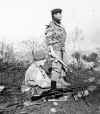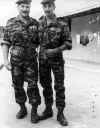By Bill Porter
February 2010
A few years ago Frank and I met up at the Baltimore Show and after walking a few miles up and down the rows we sat down in the refreshment area to have a drink and rest our feet. We got into a conversation about the website and how at times it can be somewhat of a drag trying to squeeze in a column amongst all the other things we have going on in our lives. We pretty much agreed that we do this for fun and when it stopped being fun it would be time to take a break. I guess that’s where I ended up close to two years ago. Time sure has a way of slipping past you. But I’m back and hopefully here to stay for a while.
Update
Way back in February 2004 I featured what I referred to as a French Experimental M1 Carbine bayonet. (http://www.usmilitaryknives.com/porters_page_12.htm) I took my identification from three highly respectable bayonet reference books:
The exact designation for this bayonet seems to be a little uncertain. In The Bayonet Book by Watts and White it is referred to as a MAS M1949 Experimental bayonet. Kiesling, in Bayonets of the World, calls it an experimental bayonet ca. 1965 and Atlas de la Baionette de Collection (ABC) refers to it as an experimental model 1955-60. ABC goes on to say that this bayonet was used on US M1 carbines equipped with a special adapter. These carbines armed the officers and certain specialists (radiomen) with the French Marine Commandos during the War of Algerian Independence (1954-1962).
Needless to say, the material I had available to me pretty clearly indicated that this was an experimental bayonet. Within the past few weeks we’ve received two emails from collectors in France who dispute the use of the term "experimental". The first was not signed so I’m not sure exactly who sent it, but here’s what he had to say:
hello
al origin of it SAGIT military dagger (fom) force of the seas also designed in the year 50 by LOUIS HENRION a former "shock". The civilian version of the commando dagger super nogent
it s inspires the British commando dagger 3 models, but the blade is shorter and wider.
the handle is made of aluminum alloy covered with black paint. So by the same manufacturer is 500 dagger bayonet have been made. Care includes a sleeve reinforced with an inner diameter of 15.3 mm and the outside diameter of 25 mm, a leather tie his wife form, except the circular part of the socket. the nut has notched the hilt is replaced by a screw assembly of presenting a george for use in locking bayonet rifle (no markup)The second email was from Fabrice Beaudot. He wrote:
hello
j studied since lomgtemps daggers and daggers of the French army. I can tell you is that n is not of a dagger experimental but in a piece of official distribution (pictures show this piece in action)
voila asking you to change the topic title to fit with the Réalitée. This query m have been asked by several former Navy Commando thank you d in a site as an example
For the American website, I know very well these photos, what bothers me a bit is that once again "the fumaco" is presented as an experimental model, while it is false, since all CDOs have has been ... This discrimination is due to Dominique Wenner in which an old structure, described erroneously as baio test and from this false terminology has been copied by all those who wrote about the issue, believing that DW had the truth .. This is not serious but it annoys me a bit because it's not true ... So if you can get the message to your friends, you would help to put things in order .. Thank you in advance ....In addition to the message, Fabrice sent a number of photos showing the bayonet in use by French soldiers. These are great shots, each showing the bayonet in wear or use.
Thank you Fabrice for sharing these photos with us. As everyone can see, these bayonets were used in the field and were obviously more than experimental.
We’ll stop here for this month and see where we go from here. If any of you will be at the SOS in Louisville February 18-20 please look me up and say hello. I’ll be at table G44. Any other questions or comments can be forwarded to me at porterkids@aol.com
Return to Porters Report Index



